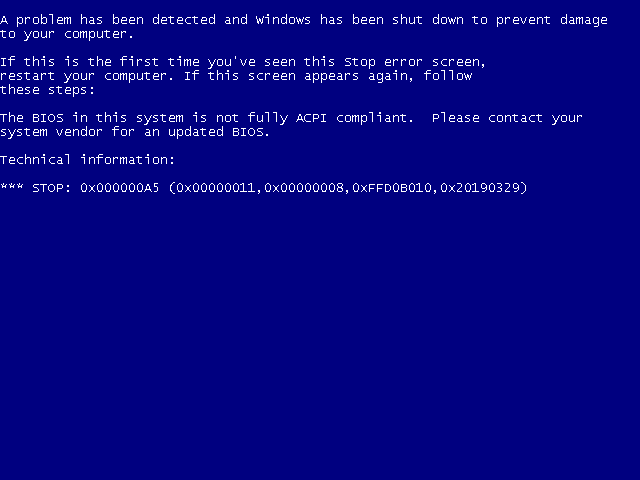From Virtualbox to QEMU

After recent update of Virtualbox to version 6.0.6-1, my VM becomes unaccessible for no reason.
Out of curious, I turn to QEMU/KVM solution so as to assure stable access to Windows(R) machine as per school course required.
After brief reading of well-written Arch wiki article about QEMU, I’m ready to make my hand dirty.
Migrating From Virtualbox Hard Disk
I misinterpret the concept of QEMU, to think that it works like Virtualbox where we have a file describing the machine, and a harddisk file for storage.
Even though, I tried to boot to the vdi files where Windows7 is in…only to know it failed.
Libvirt Usage
Well, it looks like Virtualbox UI, but in short, I can’t make it work without efforts.
Thus, this idea is thrown away.
Start From Scratch
Prepared the ISO from campus’ info center, I start the journey in CLI.
-
First, I create a qcow2
$ qemu-img create -f qcow2 Windows7.qcow2 40G -
Boot to it
$ qemu-system-x86_64 -m 4G -drive file=/path/to/qcow2 -cdrom /path/to/windows7.iso -vga qxl -
Go through Windows installer wizard, and reboot.
Now we have a basic VM up and running.
Virtio Boost
I heard of virtio a while ago, but don’t know what it is until recently.
First, we need the driver disk for Windows guest. Fedora/RedHat has kindly provided it and we have it in AUR
$ yay -S virtio-win
The ISO is installed to /usr/share/virtio/virtio-win.iso, which you can easily verify via
$ pacman -Ql virtio-win
Follow the virtio paragraph of ArchWiki and things should work.
Hard Disk
Archwiki has a thoroughly written paragraph for this topic on both fresh new virtual disk, and how to migrate from exist Windows installation to install the driver.
Noted that, as of virtio-win-0.1.164.2-1, the storage driver for w7 amd64 is broken
Other Hardware - Graphic Card, Network Card
Please follow Arch Wiki
Note that the -netdev is deprecated, use -nic instead
A Hard Attempt on iGVT
After settle down on QXL, I read iGVT-g
And after quite a few times of reinstallation/reboot, which costs me nearly one week, I failed to make it work on my i5-8250U laptop.
It all ended up Unknown error or ???? Bad Address
So, I fallback to use qxl, and bye-bye, Aero effect.
Wrap Up A Shell Script
-
Create a simple script under my home, rather
~/.binor~/.local/bin, etc. with content below#!/bin/bash qemu-system-x86_64 -m 4G \ -enable-kvm \ -nic user,model=virtio-net-pci \ -machine q35,accel=kvm \ -drive file=/path/to/your/windows.qcow2,format=qcow2,index=0,media=disk,if=virtio,aio=native,cache.direct=on,l2-cache-size=4M \ -cpu host,hv_relaxed,hv_spinlocks=0x1fff,hv_vapic,hv_time \ -usb -device usb-tablet \ -vga virtio -display sdl,gl=on "$@" -
Enable IOMMU
qemu-system-x86_64 ... -device intel-iommu \ ... -
With the fact that the window (X11 WM) is still grabbing keyboard input, a
Alt+F4would accidently close the VM and causing a force poweroff. I turn to SPICE solutionqemu-system-x86_64 ... -device virtio-serial-pci \ -device virtserialport,chardev=spicechannel0,name=com.redhat.spice.0 \ -chardev spicevmc,id=spicechannel0,name=vdagent \ -spice unix,addr=/path/to/store/spice.socket,disable-ticketing ... -
Install
virt-viewerand daemonize the processqemu-system-x86_64 ... -daemonize \ ...and can be connected via
$ remote-viewer spice+unix:///path/to/spice.socket -
Add some more pins to it
export QEMU_AUDIO_DRV=pa export QEMU_PA_SINK=$(pacmd list-sinks | grep -e 'name:' | cut -d ' ' -f 2| sed -e 's,<,,' -e 's,>,,') export QEMU_PA_SOURCE=input qemu-system-x86_64 ... -name a_cool_name \ -pidfile /path/to/vm.pid \ -rtc base=localtime \ -soundhw hda \ ...
Now it sings!
Noted that I’m using straight forward sed lines, I believe there is better way to wrap it up